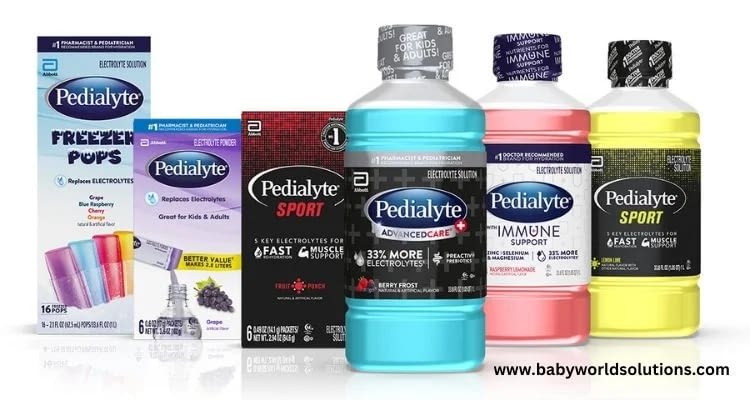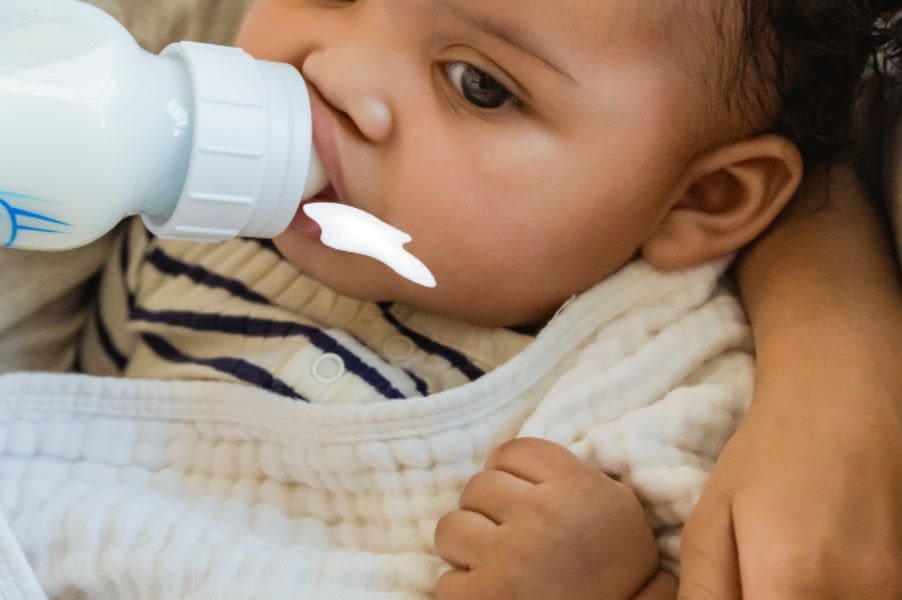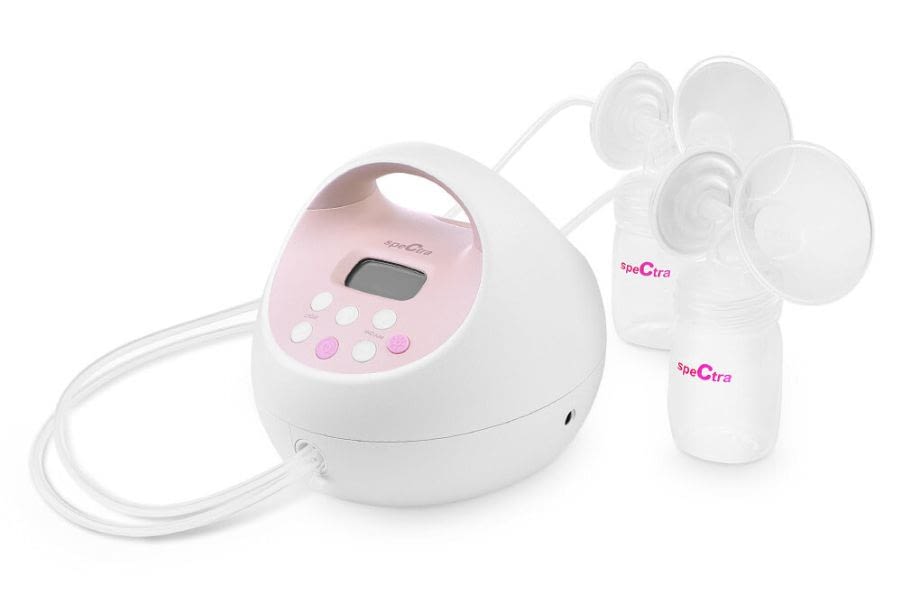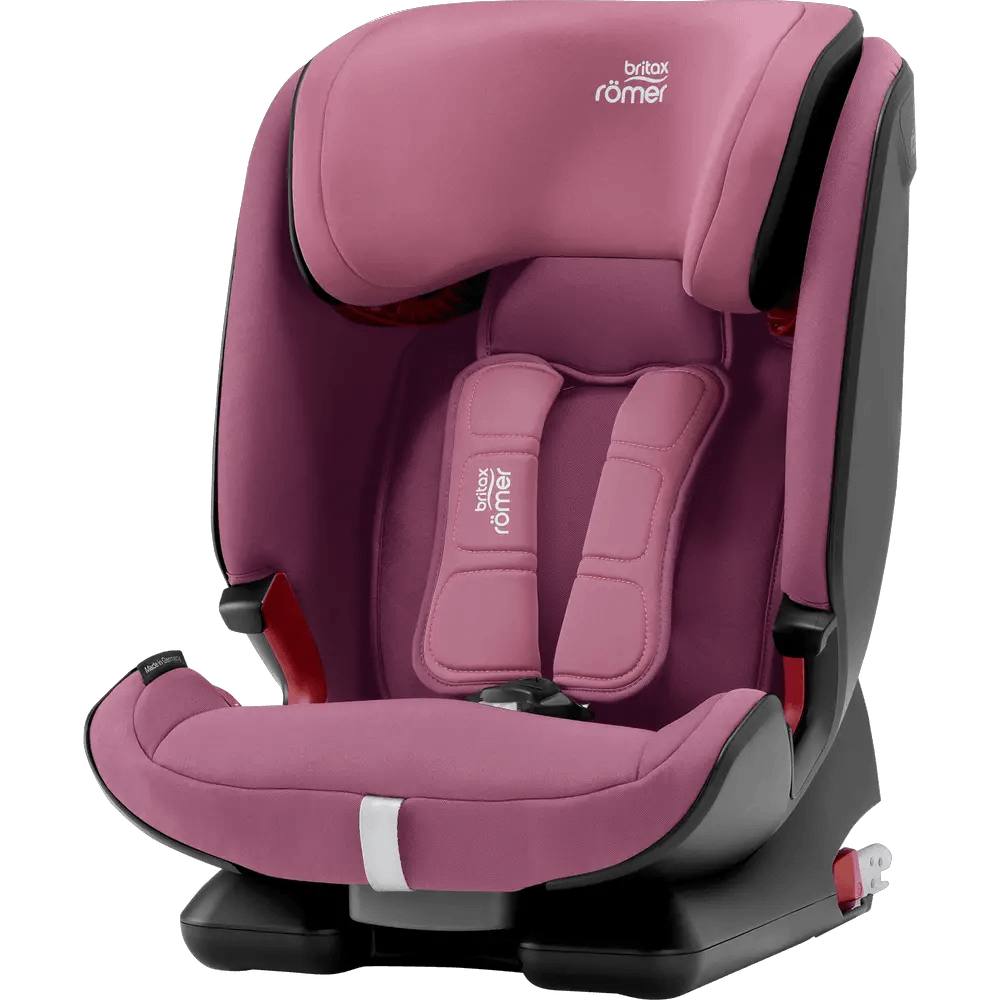As a parent, it can be hard to know when and how much Pedialyte for 6 month old baby is suitable. After all, dehydration is a serious business and kids this young are especially vulnerable.
Let’s discuss the importance of hydration for infants, factors to consider before introducing Pedialyte to their diet, age-appropriate serving sizes, allergy concerns, and alternatives for Hydration if necessary. So buckle up parents—it’s time to learn everything you need about giving your six-month-old Pedialyte!
Related: Does pedialyte expire? (Best guide with 6 Alternatives)
What is Pedialyte for infants?
Pedialyte is an oral rehydration solution often recommended for children under 1 year experiencing mild to moderate dehydration. This product contains a carefully balanced combination of sugars and electrolytes, specifically created to aid in replacing essential fluids and minerals lost due to vomiting, diarrhea, or fever.
Different Varieties Of Pedialyte
Pedialyte Classic
The original Pedialyte Classic has various tasty flavors like cherry, grape, orange, and strawberry. It contains a well-balanced combination of electrolytes and sugar, making it a popular option for treating mild dehydration symptoms.
Pedialyte AdvancedCare
This version of Pedialyte contains PreActiv Prebiotics, promoting a healthy digestive system. This product comes in a variety of flavors, including cherry punch and blue raspberry, to satisfy various preferences.
Pedialyte Powder Packs
For on-the-go rehydration, Pedialyte Powder Packs are a convenient choice. They are available in lightweight, portable packets mixed with water, offering an easy way to rehydrate during travel or outdoor activities.
Pedialyte Freezer Pops
Pedialyte Freezer Pops are a great way to rehydrate and are especially enjoyable for children. They are available in various flavors, such as grape, blue raspberry, cherry, and orange, and can be frozen for a cool and refreshing snack.
Pedialyte Organic
Pedialyte Organic offers an option made with USDA-certified organic ingredients for those seeking a more natural rehydration solution. It’s free from artificial colors, flavors, and sweeteners and is available in grapes and berries.

How much Pedialyte for 6 month old?
Yes, Pedialyte is generally safe for infants when used under the guidance of a healthcare professional.
The American Academy of Pediatrics recommends using this solution in mild to moderate infant dehydration cases. Still, speaking with a pediatrician before administering this solution is important.
If an infant is undergoing severe dehydration, it may need additional medical attention and intravenous fluids.
When Do Infants Need Pedialyte?
Pedialyte is most commonly used for infants and young children with dehydration. Signs of dehydration in babies include:
- A dry mouth or tongue
- Lack of tears when crying
- Less frequent urination (fewer than six wet diapers a day)
- Sunken eyes or Cheeks
- A high fever
- Lack of energy.
- Unusual sleepiness or fussiness
It is important to seek medical attention if these signs are present, as the cause may need to be identified and treated. Pedialyte is an effective way to prevent further dehydration while medical attention is sought.
When to give Pedialyte to a 6-month-old baby?
After recognizing the signs of dehydration in infants, If you notice any of these symptoms, you can give Pedialyte to a 6 month old infant as first care at home. Then you should contact a doctor immediately as dehydration can quickly become life-threatening in infants.
So, How many oz of pedialyte for 6 month old?
The amount of Pedialyte for a 6-month-old will depend on the baby’s weight and the severity of dehydration symptoms. Generally, providing 1-2 ounces of Pedialyte is suggested every hour, but this can vary. Monitor the infant’s diaper output, behavior, and overall wellness.
What Are the Benefits of Pedialyte for Babies?
Pedialyte provides several critical benefits for babies, mainly when they are dehydrated or unwell:
- Restores Fluid and Electrolytes: Pedialyte can help you recover faster by replenishing the essential fluids and electrolytes lost if you’re dealing with diarrhea or vomiting.
- Prevents Dehydration: By providing the necessary hydration, Pedialyte aids in preventing dehydration, a severe condition for infants.
- Balanced Composition: Pedialyte’s formulation is designed to mimic the electrolyte balance in the human body, making it efficient in restoring lost fluids.
- Promotes Renal Function: The balanced electrolyte content in Pedialyte aids the normal functioning of the kidneys.
- Easily digestible: Pedialyte is easier to digest than regular water, especially during illness. It further reduces vomiting and diarrhea symptoms due to its electrolyte composition.
- Variety of Flavors: Pedialyte is available in a variety of flavors, which can make it more palatable for infants and children.
- Free from Harmful Ingredients: Pedialyte is free from artificial colors, sweeteners, and preservatives, making it a safe choice for babies.
- Regulates Body Function: By restoring the body’s electrolyte balance, Pedialyte helps regulate nerve and muscle function, acidity, and fluid levels.
- Widely Recommended: Pedialyte is recommended by many pediatricians and healthcare providers for managing dehydration in infants and children.
- Easy to Use: Pedialyte can be conveniently administered at home, making it a practical solution for early interventions in cases of dehydration.
Pedialyte for Infants Dosage by Age and Weight
The dosage of Pedialyte for infants largely depends on their weight, dehydration level, and other factors. It’s highly recommended that you should consult a healthcare provider to determine the appropriate dosage.
A general guideline is to provide small frequent sips, starting with 1-2 teaspoons (5-10 ml) every 15 minutes and gradually increasing as tolerated. If the baby takes Pedialyte well, the amount can be increased to 1-2 ounces (30-60 ml) per hour.
It’s important to note that Pedialyte should not replace breast milk or formula but should be administered in addition to regular bottle or breast feedings.
Factors to consider before introducing Pedialyte to your baby’s diet
- Signs of Dehydration
- Weight and Dosage
- Flavors and Forms
- Monitoring and Follow-Up
Signs of dehydration
It depends on the severity of dehydration in your sick child. Follow the symptoms of dehydration, such as dry mouth, sunken eyes, etc.
Weight and Dosage
Regarding the specific dosage related to weight, if a 6-month-old baby weighs around 16 pounds (the average weight for this age), about 32 to 64 ounces of Pedialyte could be given over 24 hours.
Flavors and Forms
Pedialyte comes in various flavors and forms, but infants as young as six months should stick with the unflavored version. Always administer the solution appropriately; do not use the freezer pops or powders for infants.
Monitoring and Follow-Up
Keep track of the baby’s intake and response to the fluid. If dehydration symptoms persist or the baby exhibits any adverse reactions, immediately contact a healthcare provider.
After rehydrating, it’s essential to monitor for any lingering signs of dehydration and consult with a doctor as soon as possible. Additionally, if the baby has experienced dehydration due to diarrhea or vomiting, it is also recommended to receive follow-up care from a healthcare professional.
Guidelines for Infants Under 1 Year of Age
Infants have different hydration needs compared to older children and adults. Be sure to follow the physician’s advice regarding the specific amount to administer.
0-1 Month
For newborns aged 0-1 month, it is recommended to administer Pedialyte with explicit advice from a healthcare provider. Newborns should primarily rely on breast milk or formula for hydration and nourishment.*
2-3 Months
Give small amounts of Pedialyte for infants aged 2-3 months, typically no more than 1 ounce (30 ml) per hour.
4-6 Months
How much Pedialyte for a 5 month old or How much Pedialyte for a 6 month old infant? Well, for infants aged 4-6 months, give 1 to 2 ounces (30 to 60 ml) per hour. As with all age groups, the exact amount depends on the infant’s weight, overall health, and hydration status.
7-9 Months
Parents are wondering how much pedialyte for 7 month old and how much pedialyte for 8 month old? So, for infants aged 7-9 months, 2 to 2.5 ounces (60 to 75 ml) per hour is generally administered.
10-12 Months
You can give infants aged 10-12 months 2.5 to 3 ounces (75 to 90 ml) per hour.
Remember, this is a general guideline, and actual amounts can vary greatly depending on the infant’s specific needs. Always consult a healthcare provider before administering Pedialyte to infants under 1 year old.
Pedialyte Dosage by Age 1 and Above
Infants under 1 year:
For infants under 1 year, it’s recommended to always seek help from a doctor before providing Pedialyte. If a pediatrician advises, the usual dosage is 1 to 2 ounces of Pedialyte every hour. Dosage can be adjusted per the baby’s hydration needs and response to the fluid.
1 to 3 years:
If you are a first-time mom and wondering how much Pedialyte for 1 year old? Children aged 1 to 3 years can be given 1-2 cups (8-16 ounces) of Pedialyte over 3-4 hours. Parents must monitor their child’s intake and adjust the dosage as needed.
4 to 5 years:
The recommended dosage for children aged 4 to 5 years is 1-2 quarts (32-64 ounces) of Pedialyte over 3-4 hours.
Pedialyte dosage chart by Age:
Here is a simple chart to summarize the general dosage guidelines for Pedialyte by age for up to 13 years and above:
| Age Group | Dosage |
| Under 1 year | Consult with healthcare provider |
| 1-3 years | 1-2 cups (8-16 ounces) over 3-4 hours |
| 4-5 years | 1-2 quarts (32-64 ounces) over 3-4 hours |
| 6-8 years | 2-2.5 quarts (64-80 ounces) over 3-4 hours |
| 9-12 years | 2.5-3 quarts (80-96 ounces) over 3-4 hours |
| 13 years and above | 3-4 quarts (96-128 ounces) over 3-4 hours |
Pedialyte dosage chart for infants by weight
Here is a simple chart to summarize Pedialyte dosage guidelines by weight:
| Weight | Dosage | |
| 10 lbs | 1- 2 ounces per hour | This helps ensure proper hydration and nourishment for their growing body. |
| 15 lbs | 2 1/2 ounces per hour | This amount helps meet their increasing fluid requirements and supports their overall well-being. |
| 20 lbs | 3 1/2 ounces per hour | This helps maintain their hydration levels and supports their healthy development. |
| 40 lbs | 6 1/2 ounces per hour | This amount helps meet their growing fluid needs and promotes their overall health. |
| 60 lbs | 10 ounces per hour | This helps ensure proper hydration and supports their active lifestyle. |
How To Use Pedialyte?
Pedialyte is intended for oral use. Before giving any form of Pedialyte to your child, always follow the instructions on the label about the recommended Pedialyte for infants dosage.
- Pedialyte offers powder packs that can be mixed with water. These packs come in a variety of flavors, including orange and berry. Dissolve one packet of cold water in 16 ounces (473 ml) and stir until dissolved.
- Pedialyte can be consumed either cold or at room temperature and should not be administered if the solution is cloudy or contains particles.
- If using Pedialyte Freezer Pops, always stick with the recommended serving size of one pop daily.
- Pedialyte should not replace regular meals and snacks, as it does not provide complete nutritional value. Consuming other foods besides Pedialyte is important for optimal hydration and nutrition.
- Lastly, Pedialyte offers a transparent, unflavored variety for those who prefer an unflavored option.
- Regardless of the form or flavor, all Pedialyte products are designed to provide adequate rehydration.
Can you mix pedialyte with formula?
According to the guidelines of the American Academy of Pediatrics (AAP), mixing Pedialyte with formula is generally not recommended. Pedialyte is designed to replace fluids and salts lost due to diarrhea or vomiting.
Mixing it with formula could dilute the nutrients your baby needs from formula or breast milk. If your infant is dehydrated due to sickness, it’s best to provide Pedialyte between feedings.
Alternatives for Hydration: Other tips for keeping your 6-month-old baby hydrated
In addition to using Pedialyte, there are several other methods to ensure your 6-month-old stays hydrated:
- Breastfeeding or Formula: If you’re breastfeeding, continue on demand. For formula-fed babies, stick to your baby’s regular feeding schedule.
- Introduce Water Gradually: Around six months, you can introduce small amounts of water into your baby’s diet. Start with a few sips from a sippy cup during meals and gradually increase the dose.
- Offer Fruit Purees: Fruits are not only nutritious but are also high in water content. Pureed fruits like apples, pears, or peaches can increase your baby’s fluid intake.
- Check for Signs of Dehydration: Monitor your baby for signs of dehydration, such as fewer wet diapers, a dry mouth, or a hollow soft spot on the head. Rapid breathing, unusual fussiness, or drowsiness can also indicate severe dehydration.
- Regular Pediatrician Check-ups: Regular appointments with your child’s pediatrician can help monitor their hydration and overall health.
Read Also: Can Warmed Breast Milk Be Refrigerated Again?
Parents Also Ask
Can I mix Pedialyte with milk?
Mixing Pedialyte with milk is not recommended as it can dilute Pedialyte nutrients. Furthermore, milk can cause further stomach upset, counteracting the benefits of Pedialyte.
What is the best way to use Pedialyte?
The best way to use Pedialyte is to consume it in its original form without diluting it or mixing it with other beverages. It should be served chilled for the best taste.
Is Pedialyte better cold or warm?
Pedialyte can be consumed either cold or at room temperature, depending on personal preference. However, many people find that it tastes better when chilled.
1 Visit today





